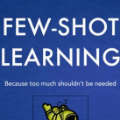For many business applications, we often seek to analyze sentiments associated with any arbitrary aspects of commercial products, despite having a very limited amount of labels or even without any labels at all. However, existing aspect target sentiment classification (ATSC) models are not trainable if annotated datasets are not available. Even with labeled data, they fall short of reaching satisfactory performance. To address this, we propose simple approaches that better solve ATSC with natural language prompts, enabling the task under zero-shot cases and enhancing supervised settings, especially for few-shot cases. Under the few-shot setting for SemEval 2014 Task 4 laptop domain, our method of reformulating ATSC as an NLI task outperforms supervised SOTA approaches by up to 24.13 accuracy points and 33.14 macro F1 points. Moreover, we demonstrate that our prompts could handle implicitly stated aspects as well: our models reach about 77% accuracy on detecting sentiments for aspect categories (e.g., food), which do not necessarily appear within the text, even though we trained the models only with explicitly mentioned aspect terms (e.g., fajitas) from just 16 reviews - while the accuracy of the no-prompt baseline is only around 65%.
翻译:对于许多商业应用,我们常常试图分析与商业产品的任何任意方面相关的情绪,尽管标签数量非常有限,甚至根本没有任何标签。然而,如果没有附加说明的数据集,现有的目标情绪分类模式就无法培训。即使有标签的数据,它们也达不到令人满意的性能。为了解决这个问题,我们提出了简单的方法,用自然语言提示更好地解决苯丙胺类兴奋剂问题,使任务在零发案例下得以完成,并加强监督环境,特别是少数发病案例。在SemEval 2014任务4笔记本电脑域的几发设置下,我们将苯丙胺类兴奋剂分类作为受监管的SOTA(ATSC)任务比受监管的SOTA(有24.13个精确点)和33.14个宏观F1点来改造。此外,我们证明我们的及时性可以处理隐含的描述方面以及:我们的模型在检测方面(例如食品)的情绪方面达到77%的准确度,这些不一定出现在文本中,尽管我们仅对模型进行了明确提及的方面(例如,fjitatas)进行了培训,而仅仅从16个审查中得出了65个基准的准确度。




